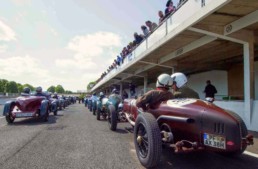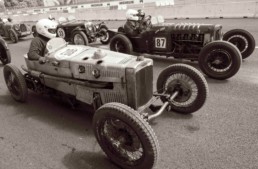[The Gallery is an occasional space to sell significant vehicles via The Vintagent]
Built 123 years ago, this 1902 Clément Autocyclette is one of the first overhead-valve motorcycles ever built, and is a rare and coveted machine. It also has about the lowest bar for entry into the fascinating universe of Pioneer motorcycles, and is an original survivor from one of the oldest bicycle and motorcycle manufacturers in the world, founded in 1876. Adolphe Clément was a pioneering bicycle racer, and started his first business building bicycles in Bordeaux at age 21, then the following year in Lyon (1877), and finally Paris, where his A. Clément et Cie thrived. By 1880 he had 150 employees, and by 1890 was the top bicycle factory in France. By then he had licensed the Dunlop pneumatic tire patent for France, and made a tremendous amount of money – enough to begin making his own motorized vehicles, both cars (1895+) and motorcycles (1902+).






c.1902 Clément 1⅓hp Autocycle
Frame no. 304649
Engine no. LM1403






Beautiful motor bike ! Great little article … the essence of what later became the motorcycle as we know it . Stuff a motor and some sort of drive into a bicycle frame … and voila … instant motor bike .
Its amazing the deeper you get into the history of the bicycle … how much impact the bicycle had on everything personal transportation from motorcycles to cars to airplanes
On a ‘ did you know that ‘ note
…… did you know that Ettore Bugatti himself got his mechanical start in bicycling ? Think about that for a minute … from one of the winningest cars in history ( the Bugatti Type 35 ) .. to one of the most luxurious ( Bugatti Royal ) to the wretched excess of todays hyper 16 cylinder uber machines … all owing their very existence .. to the lowly bicycle .
And people ask why I pay so much attention to bicycling history as I toodle around on my acoustic motor bike ( Moulton ) .. well .. ok .. under present circumstances … I dream about toodling around on my beloved Mouton . .. because .. well … you know …. sigh
😎
Forgot to mention .. IF .. I were in the market for such a bike … I’d jump on this in a heartbeat assuming the price was right ( according to market value ) Clean it up a little .. do some subtle preservation work to stop the rust while maintaining the patina .. new tires all around ( keeping the old ones for display …) new belts etc .. get er running … and off ya goes
Cause yup … she’s a little gem !
😎
they always say HD went to the Paris exhibition and came home to base their first engine on the Ricardo
So now what?
OK … I’ll bite … so ‘ Now What ?” … what ?
Where do they go from here maybe ? ( assuming they survive the self created $h!t storm in a Black Hole they’re in )
Seriously… now what … what ?
And ahh … who says ? The Enshitified don’t know its digital head from its posterior Net ?
Cause in all my H-D history BOOKS .. there’s ZERO mention of either going to any Paris Exhibition before or after the creation of H-D . Fact is with the plethora of US M/C and motor bike manufactures up and running well before H-D jumped on the bandwagon ….. there was more than enough influences to be found right in their own extended backyard
And having a friend with one of if not the largest H-D collection on the planet ( at least one of every model ever made since the very first ) .. well … suffice it to say who ever’s saying it .. is full of it !
Seriously Chris .. ya was doin real well up till this post . Begging the question … what … or perhaps more importantly .. who … changed ?
On the subject of H-D Chris … suffice it to say … they’ve gotten themselves by their own volition into one helluv an epic ‘ Goat Rodeo ”
[ A goat rodeo is a slang term for something going totally, unbelievably, disastrously wrong, and there’s nothing left to do but to sit back and watch the trainwreck ]
Supposedly the term originated with military pilots … but regardless .. it works
So … sadly … not that this should come as a surprise to anyone paying attention… nuthin fer us ta do except sit back and enjoy ?? .. the $h!tshow … cause brother .. if someone doesn’t bail them out soon .. it’ll be one for the ages .. who’s ramifications will last well beyond the lifetime of the Company ..
FYI in case you didn’t know or had forgotten .. there’s been H-Ds in the family right up to a few years ago from 1926 . .. so though no longer an owner ( suffice it to say I saw the writing on the wall 15 tears ago ) it still breaks my heart .. especially for all those busting their proverbial posteriors working in the factories .. even IF all they were doing was ‘ assembling ‘
Snif …. sigh … Toodles